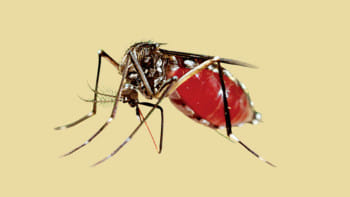Ostrich farm in Dinajpur turns heads

Arzu Man Ara certainly prefers her poultry big. In late 2016 the innovative farmer from Nayapara village in Dinajpur's Nawabganj upazila set up a successful turkey venture. But turkeys, it would seem, just weren't big enough. Thus she turned her attention to the world's largest bird, the ostrich.
She imported 20 ostrich chicks from Africa, with high hopes that the bird farmed all over the world for its feathers, leather and meat will prove a winner here. She claims that hers is the first private-sector ostrich concern in the country.
“Ostrich meat is sought after in global markets, with one kilogram selling for as much as $90,” Arzu says. “High in protein, ostrich meat can supplement local demand for beef and mutton. It's healthier than other red meat. Ostrich meat contains less fat and has lower levels of cholesterol.”
It was her experience with turkeys that led her to first consider the ostrich. “Within 18 months of starting my farm with 100 turkeys I had grown the flock to 2,000 birds,” says Arzu, who uses an incubator to hatch the eggs. “Then I thought, why not try ostriches?”

Research led her to a farm in Africa from where, in September last year, she purchased the one-day-old chicks for Tk 15,000 each. “Foremost I want to breed them,” she explains. Early efforts proved a bit hit-and-miss, with six of the birds dying from leg injuries.
Another 40 kilogram bird was slaughtered recently so that Arzu could sample the flavour of ostrich meat. “It's really tasty!” she says with delight.
Raised on chicken feed, the remainder of her flock is now around seven months old with each bird weighing up to 70 kilograms. A fully grown male ostrich can reach 2.8 metres in height and weigh more than 156 kilograms.
“It will take between two and four years for the birds to start laying eggs,” she says. “A female ostrich will lay as many as 70 eggs per year. Each chick I can sell for up to Tk 10,000.”
The chairman of genetics and animal breeding of Haji Mohammad Danesh Science and Technology University in Dinajpur, Abdul Gaffar Mia believes in the potential of ostrich farms. “Our institute imported six ostriches for research at the end of 2016,” he says. “The Bangladeshi climate is suitable for farming the birds.”
For now, Arzu's immature ostriches roam freely on one acre. They may be yet to prove their profitability as livestock, but they are certainly a curiosity, turning the heads of many a local villager who has never before seen this largest of living birds.


 For all latest news, follow The Daily Star's Google News channel.
For all latest news, follow The Daily Star's Google News channel. 





Comments